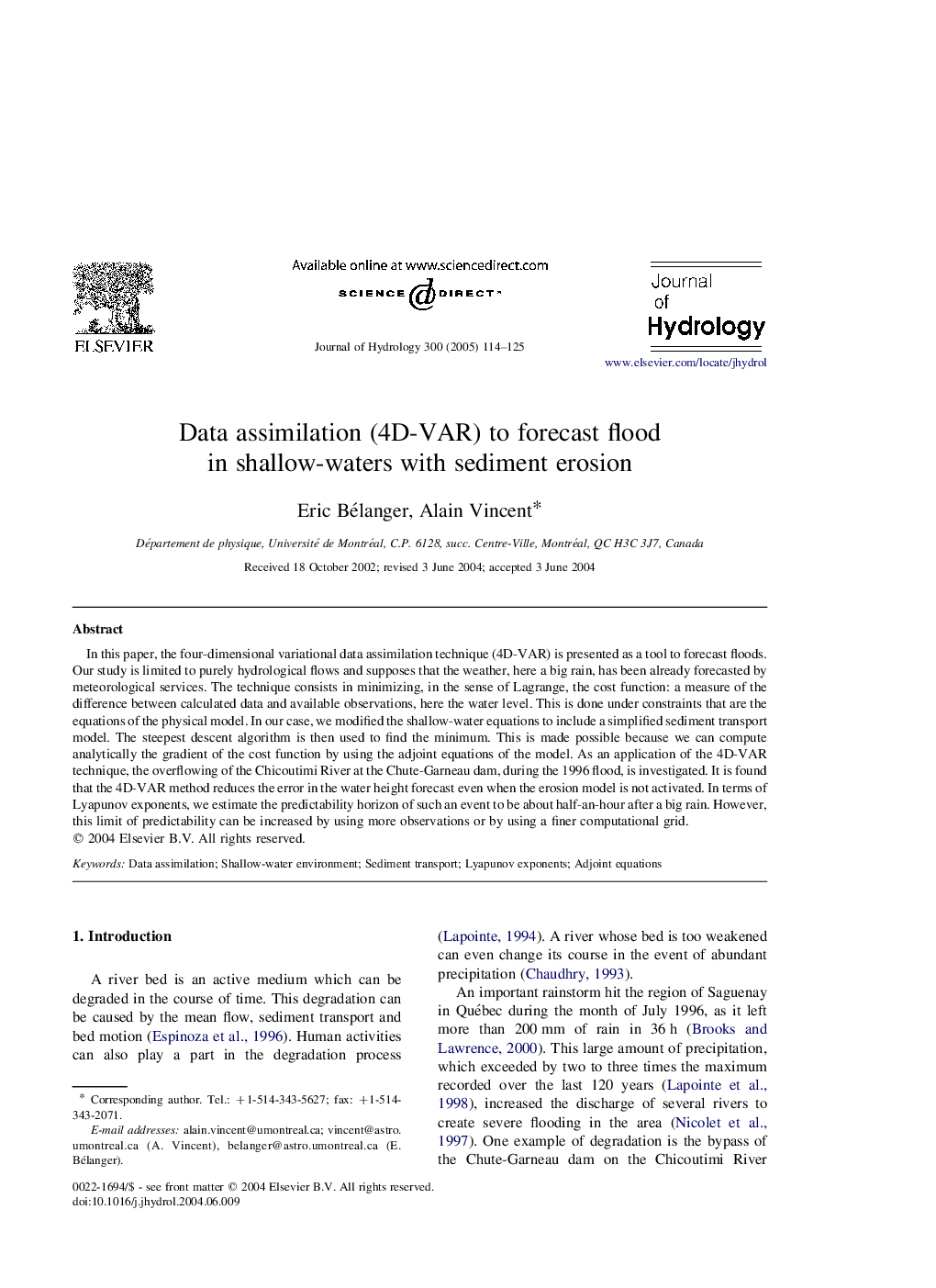| Article ID | Journal | Published Year | Pages | File Type |
|---|---|---|---|---|
| 9491600 | Journal of Hydrology | 2005 | 12 Pages |
Abstract
In this paper, the four-dimensional variational data assimilation technique (4D-VAR) is presented as a tool to forecast floods. Our study is limited to purely hydrological flows and supposes that the weather, here a big rain, has been already forecasted by meteorological services. The technique consists in minimizing, in the sense of Lagrange, the cost function: a measure of the difference between calculated data and available observations, here the water level. This is done under constraints that are the equations of the physical model. In our case, we modified the shallow-water equations to include a simplified sediment transport model. The steepest descent algorithm is then used to find the minimum. This is made possible because we can compute analytically the gradient of the cost function by using the adjoint equations of the model. As an application of the 4D-VAR technique, the overflowing of the Chicoutimi River at the Chute-Garneau dam, during the 1996 flood, is investigated. It is found that the 4D-VAR method reduces the error in the water height forecast even when the erosion model is not activated. In terms of Lyapunov exponents, we estimate the predictability horizon of such an event to be about half-an-hour after a big rain. However, this limit of predictability can be increased by using more observations or by using a finer computational grid.
Keywords
Related Topics
Physical Sciences and Engineering
Earth and Planetary Sciences
Earth-Surface Processes
Authors
Eric Bélanger, Alain Vincent,
